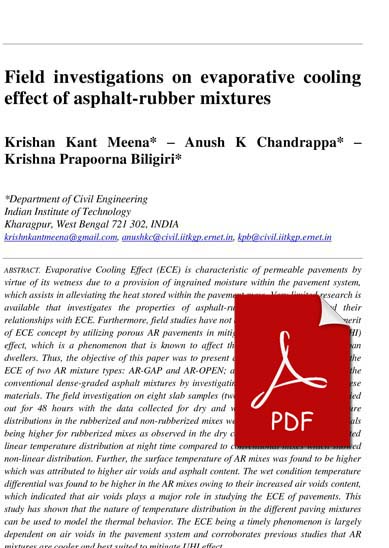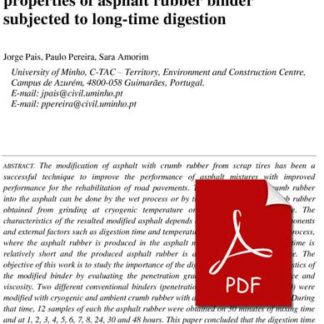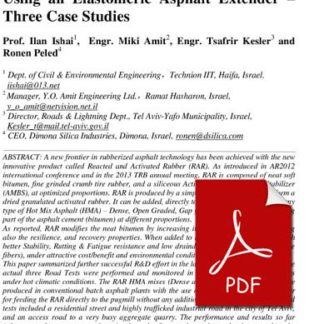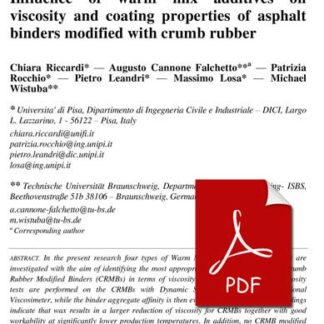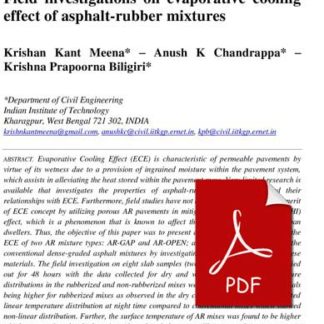Description
Evaporative Cooling Effect (ECE) is characteristic of permeable pavements by virtue of its wetness due to a provision of ingrained moisture within the pavement system, which assists in alleviating the heat stored within the pavement mass. Very limited research is available that investigates the properties of asphalt-rubber (AR) mixtures and their relationships with ECE. Furthermore, field studies have not been conducted to show the merit of ECE concept by utilizing porous AR pavements in mitigating Urban Heat Island (UHI) effect, which is a phenomenon that is known to affect the thermal comfort of the urban dwellers. Thus, the objective of this paper was to present a methodology to understand the ECE of two AR mixture types: AR-GAP and AR-OPEN; and compare the results with the conventional dense-graded asphalt mixtures by investigating the thermal behavior of these materials. The field investigation on eight slab samples (two for each mix type) was carried out for 48 hours with the data collected for dry and wet conditions. The temperature distributions in the rubberized and non-rubberized mixes were different with the differentials being higher for rubberized mixes as observed in the dry condition. The AR mixes depicted linear temperature distribution at night time compared to conventional mixes which showed non-linear distribution. Further, the surface temperature of AR mixes was found to be higher which was attributed to higher air voids and asphalt content. The wet condition temperature differential was found to be higher in the AR mixes owing to their increased air voids content,
which indicated that air voids plays a major role in studying the ECE of pavements. This study has shown that the nature of temperature distribution in the different paving mixtures can be used to model the thermal behavior. The ECE being a timely phenomenon is largely
dependent on air voids in the pavement system and corroborates previous studies that AR mixtures are cooler and best suited to mitigate UHI effect.

